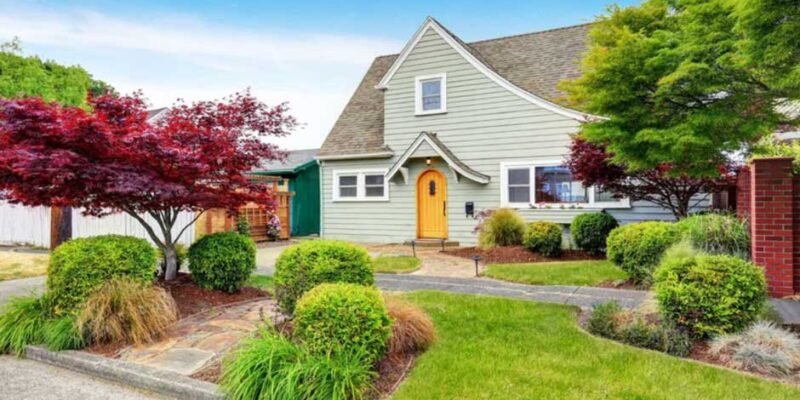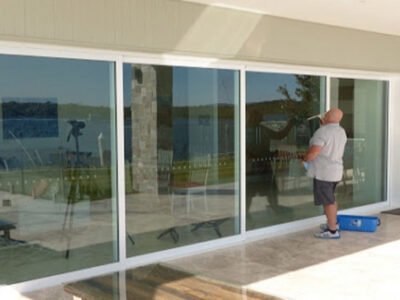One of the most important things people should consider when choosing which trees to plant on their property is the size. Then you need to consider whether you want evergreens, fruit-bearing trees or deciduous trees. Many people, however, forget to think about the shape of the trees and it’s actually important when it comes to location. A wide-spreading tree if planted in a poorly chosen place can cause issues to your house, wires, or something else.
Check our guide on tree shapes and landscaping so you can choose the right ones.
The Role of Tree Shapes in Landscape Design
Trees are vital for providing shade and oxygen outdoors. They also shape a landscape’s look. The form of a tree can greatly impact a garden. It affects everything from the layout of paths to the mood of the space.
Significance of Selecting the Right Form
When planning a landscaping project, you must consider the form of the trees. Choosing the right tree shapes can help create a cohesive environment. They will enhance the beauty and usefulness of your garden. Understanding the shapes of different trees will help you make informed decisions. These decisions will best fit your landscape goals.
1. Pyramid or Conical Trees
Characteristics and Appearance
Pyramids or conical trees have a tall, narrow shape. Their branches taper towards the top, forming a pyramid or cone shape. These trees usually have one main leader. They keep their shape for their whole lives.
Best Uses in Landscaping
Pyramid trees are great for making focal points. They can also highlight vertical lines in the landscape. They are often used to define entrances, frame views, or add height to garden beds and borders. Also, they are compact. This makes them good for small gardens or urban spaces with limited space.
2. Columnar or Upright Trees
Characteristics and Appearance
Trees with a narrow, vertical form grow branches upwards, not outwards. These trees often have a strong central leader and maintain a uniform shape from top to bottom.
Ideal Applications in Garden Design
Columnar trees create vertical interest in the landscape. They are well-suited for this, especially in narrow spaces. They can be used to line pathways, frame entryways, or provide a sense of enclosure when planted in rows. For a modern landscape or a formal garden, their slender profile makes them an excellent choice.
If you’re looking for ideas for an inside garden, check out our post on how to design a bonsai garden.
3. Weeping or Cascading Trees
Features and Appearance
Cascading trees are some of the most beautiful ones you can choose but they tend to grow rather big, so choose the type wisely. These trees often have a central trunk. From it, branches arch downwards, creating a dramatic and elegant shape.
Creative Uses in Landscape Architecture
Weeping trees add drama to the landscape. They also bring movement. This makes them ideal as focal points or centrepieces. They can accent water features. They can soften hardscape elements. They can create intimate garden spaces. Also, their trailing branches create enclosure and privacy. They do this when planted near seating areas or patios. See the types of weeping trees decide on which ones you like most, and get them in your garden.
4. Round or Globe Trees: Description and Appearance
Round or globe trees have a symmetrical, rounded form. Their branches extend evenly in all directions, creating a spherical shape. These trees have a dense canopy. They keep their shape without much pruning.
Effective Uses in Garden Settings
Round trees are versatile. You can easily plant them in a formal or informal property, plus there’s a great variety of plants to choose from. You can use them to create a focal point in your garden. They draw the eye and add visual interest. Also, they are small. This makes them good for planting in containers or small garden beds.
5. Vase or Spreading Trees
Attributes and Appearance
Vases or spreading trees have a broad, spreading form. Their branches arch outward from a central trunk. They resemble the shape of a vase or urn. These trees often have a strong central leader. They also have broad, horizontal branches that provide lots of shade.
Practical Applications in Landscape Design
Vase trees are great for shade and shelter in the landscape. They are ideal for planting near outdoor living or seating areas. They can also define boundaries. They can screen unsightly views. Or, they can create interest with their broad, spreading canopy.
6. Multi-stemmed or Clump Trees
Characteristics and Appearance
Multi-stemmed or clump trees have many trunks or stems. These grow from the ground, creating a dense, bushy look. The trees often have a natural, informal shape. Their branches spread outward in all directions.
Utilisation in Various Landscaping Styles
Multi-stemmed trees add texture and complexity, suiting informal, naturalistic gardens. They can create natural groves. They can provide screening or windbreaks. They can add vertical layers to the garden. Also, their unique form attracts wildlife. It provides habitat and food for birds and small mammals. If you’re struggling with shaping your trees, you can always get a pro tree surgery team to get it done.
Conclusion: Enhancing Your Landscape with the Right Tree Shapes
Choosing the right tree shapes is key. They create a good-looking and useful landscape. Also, check out other investments that are worth it to improve your landscape. You may want to create vertical interest or provide shade and shelter. Or, you may want to add drama and elegance to your garden. There’s a tree shape to suit your needs. By understanding the shapes and uses of different tree types, you can make smart choices. These choices will make your outdoor space more beautiful and useful.














Comments